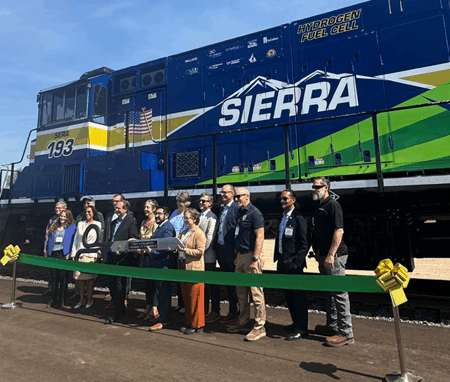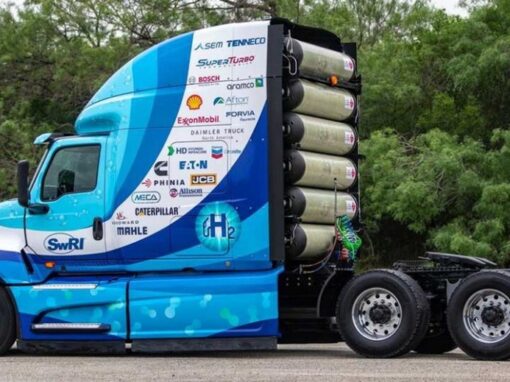July 28, 2025
With three million miles of natural gas pipelines and more than 1,600 miles of dedicated hydrogen pipeline, the United States boasts a substantial network of power. As we look to dominate the energy landscape, the blending of hydrogen with natural gas can be used to achieve near-term emissions reductions as well as early market access for hydrogen technologies. Domestically and across the globe, leading energy innovators are demonstrating how hydrogen blending can contribute to the transition to a low-carbon future.
Hydrogen blending involves injecting a certain percentage of hydrogen gas into natural gas pipelines or gas-fired power plants. The blended fuel can then be used for electricity generation, heating, and industrial processes. This strategy serves as a transitional solution, reducing carbon emissions without requiring a complete overhaul of existing infrastructure. While blending ratios are typically modest, often up to 20% hydrogen by volume, some recent demonstrations have pushed the boundaries much further.
One of the most ambitious hydrogen blending demonstrations to date comes from FCHEA member Mitsubishi Power and Georgia Power. This year, the companies successfully completed a second trial blending hydrogen and natural gas on Mitsubishi’s M501GAC advanced class gas turbine at Georgia Power’s Plant McDonough-Atkinson in Smyrna, Georgia. This project marked the first validation of 50% hydrogen fuel blending on an advanced class gas turbine. Conducted at both partial and full load, the test demonstrated that a 50% hydrogen blend could be used reliably and efficiently in utility-scale power generation. The trial achieved an estimated 22% reduction in carbon dioxide emissions compared to operating the turbine on 100% natural gas.
Hydrogen blending isn’t just making strides in the U.S. This year, FCHEA member Accelera by Cummins, signed a Memorandum of Understanding (MOU) with GAIL, India’s leading natural gas company, to explore green hydrogen production and integrate it into India’s extensive natural gas infrastructure. Together, Accelera and GAIL plan to evaluate hydrogen blending, transportation, and storage solutions, with a focus on applications in power, transportation, and heavy industry.
While many hydrogen blending projects focus on utility-scale generation or industrial applications, Southern California Gas (SoCalGas) is showcasing its potential at the residential level. The Hydrogen Home, located in Downey, California, is a home equipped with fuel cell appliances, solar panels, and battery storage, connected to a pipeline with up to 20% hydrogen blended into the natural gas supply. At the Hydrogen and Fuel Cell Seminar earlier this year, FCHEA was able to tour the facility with a delegation of Japanese companies.
While these initial deployments and demonstrations are moving hydrogen blending forward, more research and development is continuing to ensure safety and performance. Our sector is also examining how regulatory frameworks need to evolve to account for hydrogen’s unique properties, and what role economic incentives or other policies can play to encourage large-scale deployment.
Hydrogen blending is rapidly evolving from a theoretical concept into a practical solution. From Mitsubishi Power’s record-setting trial in Georgia to collaborative efforts in India and residential demonstrations in California, projects around the world are proving that hydrogen blending can play a vital role in the energy transition today.



